April 2025
Fig.1
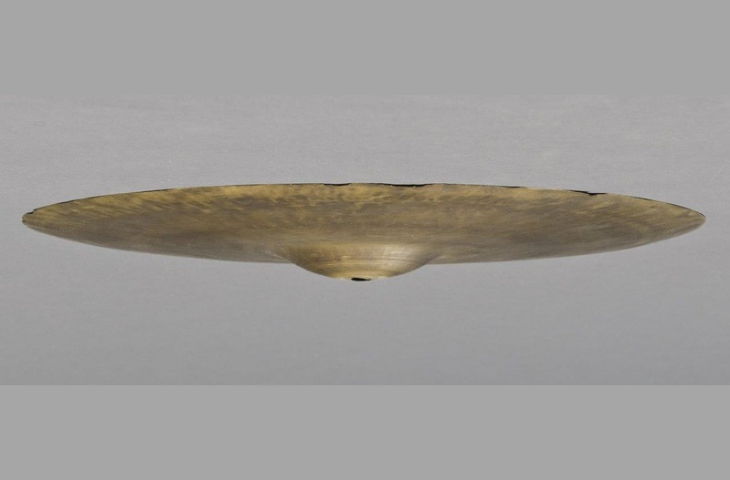
Bottom hi-hat cymbal (side view), Avedis Zildjian Co, Quincy (USA), around 1950, inv. D2015.002.007, deposit KBF
Fig.2

Detail of the brand
Fig.3

Example of a hi-hat, Ajax, Edgware, 1950s, inv. 3976
Fig.4

Kenny Clarke and Jean Warland, side by side in Jacques Hélian’s orchestra, Paris, 1956, deposit KBF, © M. Combes
Fig.5
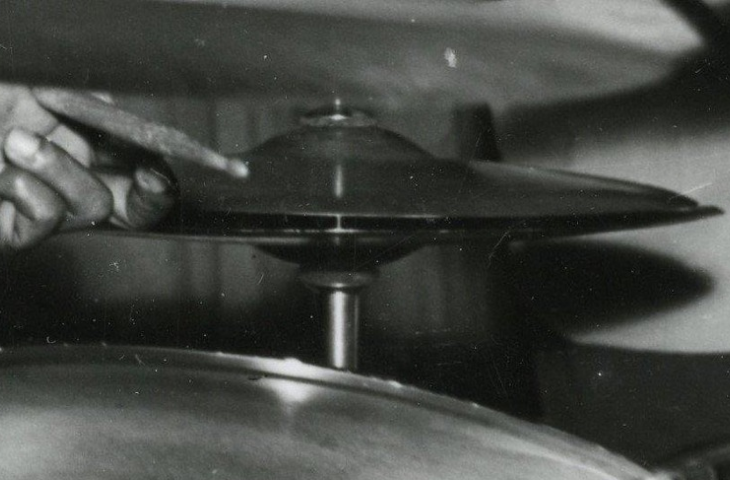
Detail of Kenny Clarke’s hi-hat with two cymbals of different diameters
Fig.6
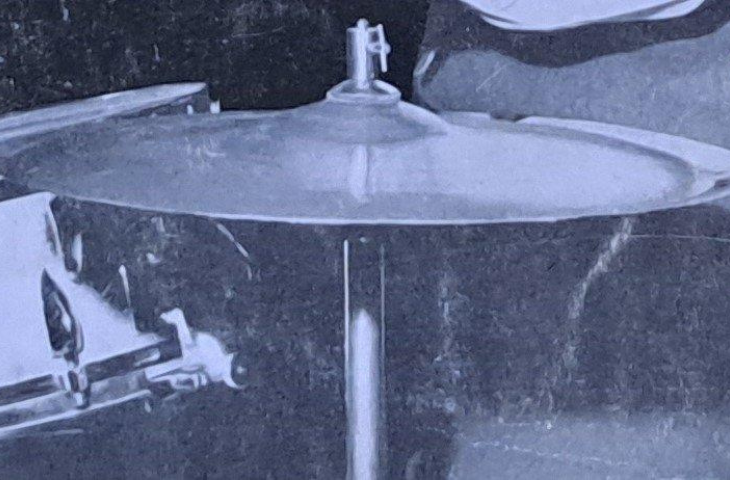
Detail of Kenny Clarke’s hi-hat with two cymbals of different diameters
Fig.7
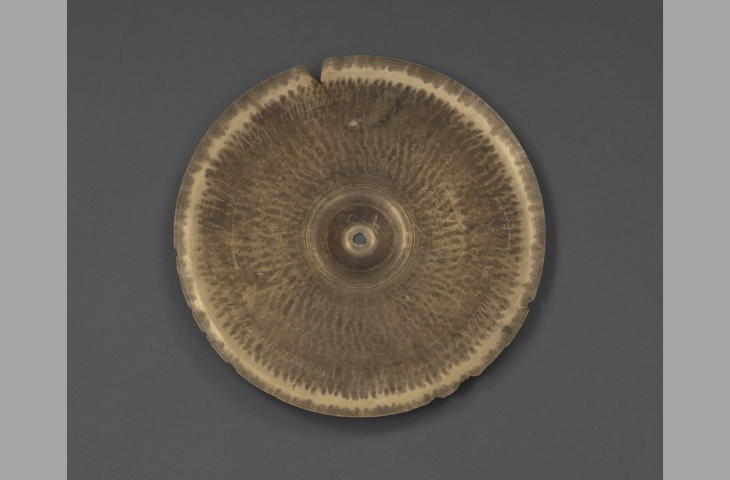
Bottom hi-hat cymbal, inside face with the mark left by a smaller-diameter cymbal
Fig.8
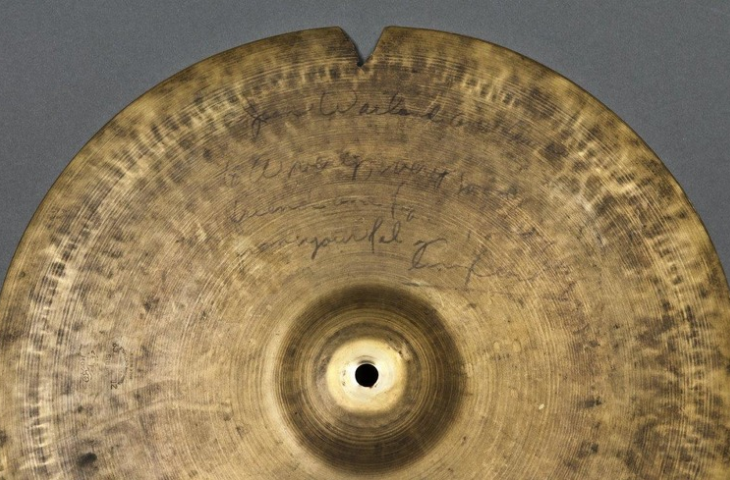
Detail of Kenny Clarke’s autograph dedication to Jean Warland
Fig.9
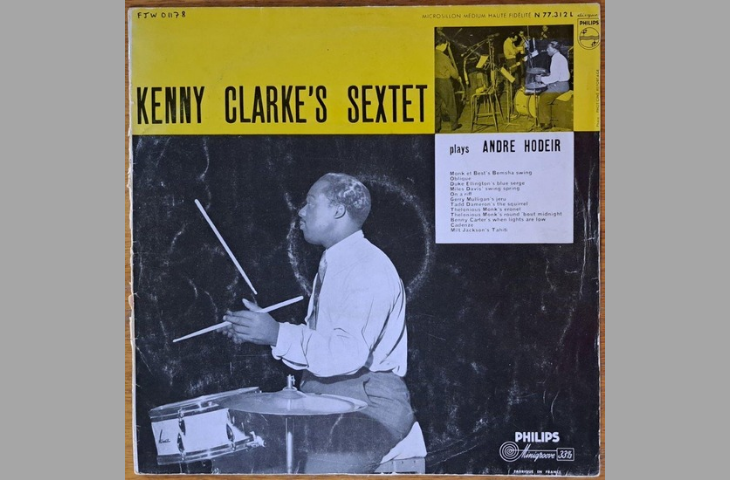
Cover of the LP album Kenny Clarke’s Sextet Plays André Hodeir, Philips, N.77.312L, deposit KBF
Fig.10

Cover of the LP album Kenny Clarke’s Sextet Plays André Hodeir, Philips, N.77.312L, deposit KBF
Cymbals: versatile percussion instruments with a rich history
Cymbals belong to the family of percussion instruments, and more precisely to the percussion idiophones, according to the systematic classification of musical instruments (fig.1). Used in the military music of the Janissaries of the Ottoman Empire, then in vogue throughout Europe from the 18th century onwards, cymbals crossed the Atlantic and found their way into the standard equipment of jazz drummers at the turn of the 20th century. Cymbals from Turkey and China were the most popular.
Today, Zildjian – based in the United States but founded over 400 years ago in Constantinople – is one of the most emblematic companies in this highly specialised sector of instrument making (fig.2). Generally made of bronze, brass or other jealously guarded alloys, cymbals come in a very wide range of sizes, shapes, thicknesses, names, functions, playability and sonority.
The hi-hat, a key element of the jazz drum set
The hi-hat, also known as choke cymbals, is a device that became an established part of the jazz drum kit in the 1920s. It consists of a pair of cymbals placed horizontally, facing each other, on a shaft fitted with a sliding rod and operated by a foot pedal (fig.3). Pressing this pedal causes the two cymbals to clash. The travel between the two cymbals can be adjusted to suit the preferences of the drummer, who can also play them with the drumsticks. The hi-hat, with its continuous sound and unexpected smoothness, even provides the rhythmic pulse.
A hi-hat cymbal with a special history
At the MIM, you can find a hi-hat cymbal with a rather special history. It is part of the Jean Warland collection, which was deposited at the MIM in 2015 thanks to the King Baudouin Foundation. It belonged to Jean Warland (1926-2015), an internationally renowned Belgian jazz bassist. In 1956, he met the famous American drummer Kenny Clarke (1914-1985) in Jacques Hélian’s orchestra (fig.4). Kenny Clarke, nicknamed Klook, was already considered one of the most influential drummers in the history of jazz, with an innovative and modern style, one of the kings of bebop, crowned by his collaborations with the Modern Jazz Quartet, Art Farmer, Charles Mingus, Thelonious Monk, Donald Byrd and others. Clarke moved to France permanently in 1956.
At the end of a session in Paris in 1957, the legendary drummer gave Jean Warland this lower hi-hat cymbal as a souvenir. Although the two cymbals on a hi-hat are usually the same diameter, some drummers – like Kenny Clarke – prefer to use a smaller top cymbal (fig.5 & 6). This allowed him to accentuate the second and fourth beats with great precision, a characteristic of his playing. In his autobiography, Warland says: Asymmetrical cymbals are an integral part of Kenny Clarke’s legendary sound and rhythm; they mark the beginning of bebop, they were intimate companions of Miles Davis, John Birks Gillespie and Charlie Parker, The Bird!. Our cymbal bears the traces of that era, showing the wear marks of a smaller top cymbal (fig.7).
A lasting friendship and collaboration
Clarke and Warland crossed paths on numerous occasions, notably in Kenny Clarke’s Sextet, or later in the Clarke-Boland Big Band, a renowned big band formed in the early sixties around the American drummer and Belgian pianist Francy Boland. But it wasn’t until the 1970s, at a tribute concert to Charlie Parker organised in Cologne by the Westdeutscher Rundfunk, that Jean Warland asked Kenny to write him a dedication (fig.8). These few words (À Jean Warland avec Amour ! / to a very, very good / friend and Cymbal Buddy / from your Pal / Kenny Clarke) can still be seen on the cymbal, carefully preserved by the Belgian bassist and now housed at the MIM, alongside numerous recordings (fig.9 & 10).
Text: Géry Dumoulin
Bibliography
- Géry Dumoulin, “La batterie, fille du jazz et parfaite symbiose instrumentale”, in Michel Mainil, Bruno Castellucci. Itinéraire d’un sideman, Brussels, Bossa Flor, 2024, p. 154-165
- Jean Warland, Bass Hits, Brussels, Le Cri, 2009
- Rainer Kind, Kenny Clarke, Brussels, Conservatoire royal de musique (dissertation), 1992
Audio
Jeru, Gerry Mulligan, arr. André Hodeir. Kenny Clarke’s Sextet Plays André Hodeir, 1957, Philips, N.77.312L (CD Philips 834 542-2), MIM, library, deposit coll. KBF (fonds Warland). Billy Byers (tb), Hubert Rostaing (as), Armand Migiani (bs), Martial Solal (p), Jean Warland (b), Kenny Clarke (dms)